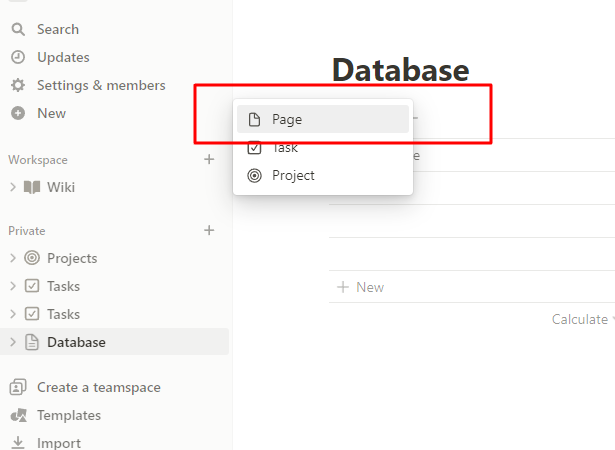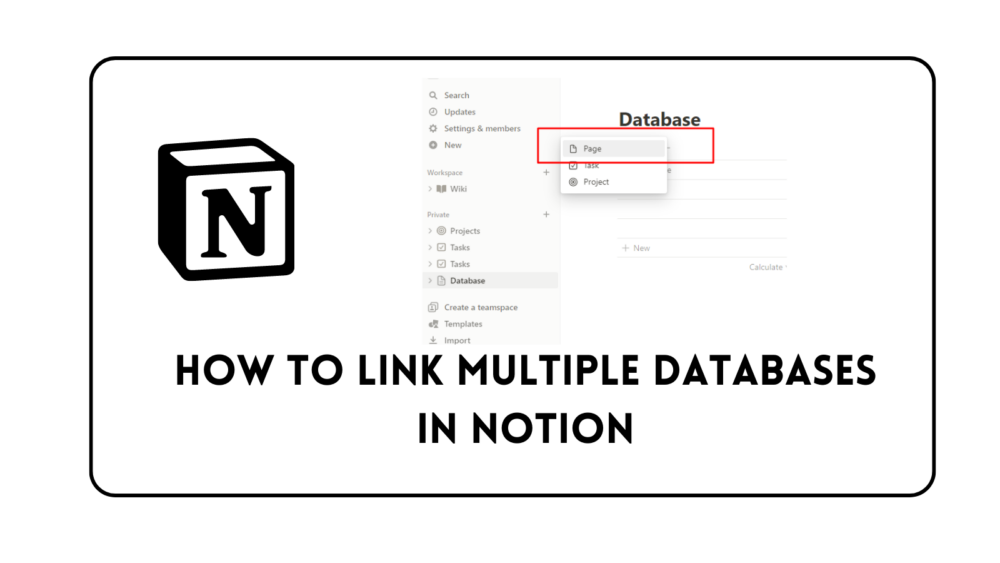How to successfully Link Multiple Databases in Notion?
Have you ever found yourself juggling numerous databases in Notion and wishing there was a simpler way to connect them all? Are you searching for a way to make your life easier by linking those databases to streamline your workflow? Well, you’ve found yourself in the right place.
“Why would I need to link databases?” or “Isn’t it complicated?” The answer is no, it’s not complicated at all, and there are many benefits to Notion multiple databases linking together.
By connecting your databases, you can manage and visualize your information more effectively, making it easier to see the bigger picture of your projects.
What is Notion?
Notion is a comprehensive tool that provides a digital workspace for all your tasks, notes, and projects. It’s an all-in-one platform designed to centralize your work and ideas, eliminating the need to jump between different apps for various tasks.
Notion serves as your digital notebook, planner, and project manager. It’s a platform where you can create to-do lists, write notes, manage projects, and even collaborate with team members.
Its unique feature is its adaptability to different use cases. It’s not just for professionals managing tasks, but also for students organizing their study schedules, writers outlining their work, or teams collaborating on projects.
Notion is a tool designed to simplify and streamline your organizational needs. It consolidates your work, information, and collaboration efforts into one easy-to-navigate platform, making your life and work more efficient and organized.
How do I sync multiple databases in Notion?
To synchronize or link multiple databases in Notion, you’ll want to follow a series of steps.
Step 1: Databases in Notion
Before jumping into the linking process, it’s crucial to understand the nature of the databases you are dealing with.
Are they task lists, project overviews, calendars, or something else? Recognizing their individual roles will help determine the most effective way to link them.
Step 2: Creating a Relation Property
The first practical step is to create a ‘relation‘ property. This term might sound fancy, but it’s just a way of making a connection between two databases.
- Open one of your databases.
- Click on the ‘+Add a property’ button, usually found at the top of your database.
- Give your new property a name.
- For the property type, select ‘Relation’.
- In the pop-up window that appears, choose the database you want to link with.
Step 3: Connecting Databases
Now you’ve created the link, it’s time to populate it.
- In the row you wish to link, click on the new Relation property cell.
- Click on ‘+Add relation’.
- A drop-down menu will appear. From there, you can choose an existing entry from the other database to link with or create a new entry.
Step 4: Using the Link
You’ve linked your databases! Now, whenever you update the related entries in one database, the changes will automatically reflect in the other.
You can create as many relations as needed and even link a single database to multiple others.
How do I link databases across workspaces in Notion?
Working with multiple workspaces in Notion and trying to link databases across them can initially seem like a complex task. Once you understand the process, it becomes as easy as pie. So, let’s dive in.
The Current Limitations
Before starting, it’s important to note that as of now, Notion does not natively support linking databases across different workspaces. Each workspace is separate, primarily for privacy and data management reasons.
The Workaround: Sharing and Duplicating
While you can’t directly link databases across workspaces, you can effectively ‘move‘ a database from one workspace to another. This process involves duplicating the database and adding it to the desired workspace.
Step 1: Share Your Database

- Click on the ‘Share’ button located at the top right corner of your database page.
- Enable the ‘Share to the web’ option.
- Copy the provided link.
Step 2: Import the Database into the Other Workspace

- Switch to the workspace where you want the database to be.
- Click on ‘Import’ located at the left-hand side panel.
- Choose ‘Web’ as the import option.
- Paste the link you copied earlier.
- Click on ‘Import’.
Things to Keep in Mind
While this method allows you to duplicate a database from one workspace to another, it does not create a ‘live‘ link between the two. Any changes made in one will not reflect in the other. You would need to update the databases in each workspace manually.
Despite this limitation, this workaround can be useful in certain circumstances, such as migrating data from one workspace to another or creating templates that can be used across multiple workspaces.
Can you add multiple databases in Notion?
Can you add multiple databases in Notion? You can! Notion’s versatility allows you to create and manage as many databases as you need.
Whether you’re dealing with various projects, tasks, or calendars, each can exist as a separate database within the same workspace.
So, let’s delve into the process of setting up multiple databases in Notion.
Step 1: Creating Your First Database

If you’re new to Notion, the first thing you’ll need to do is create a database. Here’s a quick guide:
- On your workspace, click the ‘+ New Page’ button.
- Give your new page (which will be your database) a title.
- Underneath the title, you’ll see an option to pick a ‘Database’ type – ‘Table’, ‘Board’, ‘List’, ‘Calendar’, or ‘Gallery’. Select the one that suits your needs.
Now, you’ve created your first database!
Step 2: Adding More Databases

Adding more databases follows the same process. Just click ‘+ New Page‘ again, and repeat the abovementioned steps. Each new database you create can be unique, meaning you can have a ‘Table’ database for one project and a ‘Board’ for another.
Each Database is Independent
Each database in Notion is an independent entity. They don’t interact or interfere with each other unless you want them to, which is when linking databases comes into play (a topic we discussed earlier). This independence allows you to organize and manage different projects or tasks effectively.
Utilize Page Hierarchies
To keep things organized, remember that you can create databases within existing pages, forming a hierarchy. This method is great for grouping related databases or breaking down larger databases into sub-databases.
How to Link Multiple Databases in Notion (step-by-step guide)
Linking databases in Notion might sound like a tricky task, but it becomes a walk in the park with the right guidance. In this guide, we’ll break down the process step by step, ensuring you’ll link databases like a pro in no time.
What is a Linked Database?
The linked database is essentially a way to view and interact with a single database from multiple places within Notion.
You can filter, sort, and customize each view of the linked database independently, allowing you to access specific parts of your data without altering the original database.
Step 1: Create Your Databases
Firstly, you’ll need to have the databases that you want to link. If you don’t have your databases set up yet, refer to the previous section on ‘Adding Multiple Databases in Notion‘.
Step 2: Set Up a Relation

The magic of linking databases in Notion lies in a property type called ‘Relation‘. This property allows you to connect entries between two databases.
- Open one of your databases.
- Click on ‘+Add a property’.
- Name your new property.
- In the property type, select ‘Relation’.
- A window will pop up. Here, select the database you want to link to.
Step 3: Link Your Entries

After setting up a relation property, you’ll need to link specific entries together.
- Click on the relation cell in the row you want to link.
- Click ‘+Add relation’.
- In the dropdown menu, you can link to an existing entry in the other database or create a new entry.
Step 4: Link More Databases (Optional)
Now, you’ve successfully linked two databases! If you wish to link more databases, just repeat steps 2 and 3 for each new database you want to connect. You can attach a single database to multiple others, creating a web of interconnected data.
Step 5: Explore Your Linked Databases
With your databases now linked, you can navigate from one entry in one database to a related entry in another with just a click. Plus, any updates in one database will automatically reflect in all others it’s linked to.
Let’s End It
Linking multiple databases in Notion can supercharge your productivity by offering streamlined access to your varied data. Though it might seem daunting at first, with a little practice, you’ll soon master the steps and understand the benefits of this powerful feature.

